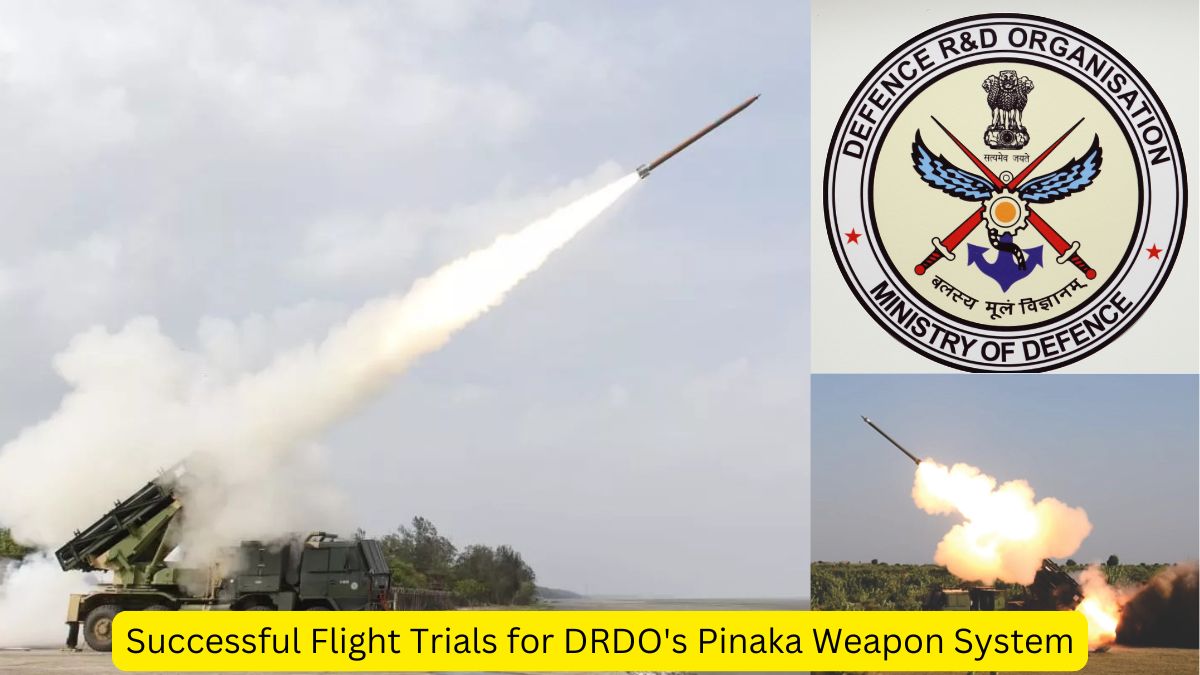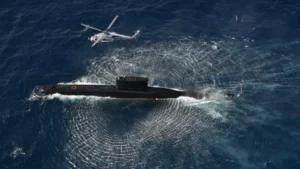The Defence Research and Development Organisation (DRDO) has successfully completed a series of flight tests for the Guided Pinaka Weapon System, conducted as part of the Provisional Staff Qualitative Requirements (PSQR) Validation Trials. This critical milestone involved three phases of testing across different field firing ranges, demonstrating the system’s operational effectiveness, precision, and advanced capabilities.
Overview
Purpose of Trials
- Conducted as part of PSQR Validation Trials to validate operational readiness for Indian Army induction.
Trial Phases
- Conducted in three phases at multiple field firing ranges.
- Extensive testing evaluated PSQR parameters like range, accuracy, consistency, and rate of fire in salvo mode.
Key Parameters Assessed During Trials
- Range: The system’s ability to strike targets at extended distances.
- Accuracy: Precision of strikes over varying ranges.
- Consistency: Repeated effectiveness in hitting designated targets.
- Rate of Fire: Performance in engaging multiple targets in a single salvo.
Test Specifications
- Rocket Count: Twelve rockets from each production agency tested.
- Launchers Used: Two upgraded, in-service Pinaka launchers provided by production agencies.
Development and Design Contributors
Primary Design Agencies
- Armament Research and Development Establishment (ARDE)
- Research Centre Imarat (RCI)
- Defence Research and Development Laboratory (DRDL)
- High Energy Materials Research Laboratory (HEMRL)
- Proof & Experimental Establishment (PXE)
Production Agencies
For Ammunition: Munitions India Limited and Economic Explosives Limited
For Launchers and Battery Command Posts: Tata Advanced Systems Limited and Larsen & Toubro
Statements from Officials
Raksha Mantri, Shri Rajnath Singh
- Praised DRDO and the Indian Army for successful PSQR trials.
- Emphasized that the Guided Pinaka will bolster the artillery firepower of the Armed Forces.
Dr. Samir V. Kamat, Secretary of Department of Defence R&D and Chairman of DRDO
- Congratulations to the teams for meeting pre-requisite flight trials requirements.
- Confirmed readiness of the Guided Pinaka for induction into the Indian Army.
Significance
- Indigenous Development: Entirely developed in India, underscoring self-reliance in advanced defense technology.
- Enhanced Firepower: Precision strike capability boosts the Indian Army’s operational effectiveness.
- Advanced Features: Incorporates a Multiple Launch Rocket System (MLRS) with indigenous components for improved accuracy, efficiency, and strategic flexibility.
| Summary/Static | Details |
| Why in the news? | Successful PSQR Validation Trials of the Guided Pinaka Weapon System by DRDO |
| Conducted By | Defence Research and Development Organisation (DRDO) |
| Purpose of Trials | Validation of Provisional Staff Qualitative Requirements (PSQR) for readiness of Indian Army induction |
| Phases of Testing | Three phases across different field firing ranges |
| Key Parameters Assessed | – Range
– Accuracy – Consistency – Rate of fire in salvo mode |
| Rocket Testing | – 12 rockets from each production agency
– Tested with two upgraded, in-service Pinaka launchers |
| Development Contributors | – Armament Research and Development Establishment (ARDE)
– Research Centre Imarat (RCI) – Defence Research and Development Laboratory (DRDL) – HEMRL and PXE |
| Production Agencies | – Ammunition: Munitions India Limited, Economic Explosives Limited
– Launchers and Command Posts: Tata Advanced Systems Limited, Larsen & Toubro |
| Significance | – Enhanced artillery capabilities for Indian Army
– Step toward self-reliance in defense technology – Improved operational flexibility and firepower |



 Indian Navy to Commission INAS 335 (Ospr...
Indian Navy to Commission INAS 335 (Ospr...
 Indian Navy to Commission First Indigeno...
Indian Navy to Commission First Indigeno...
 Rajnath Singh Inaugurates 125 Border Inf...
Rajnath Singh Inaugurates 125 Border Inf...







